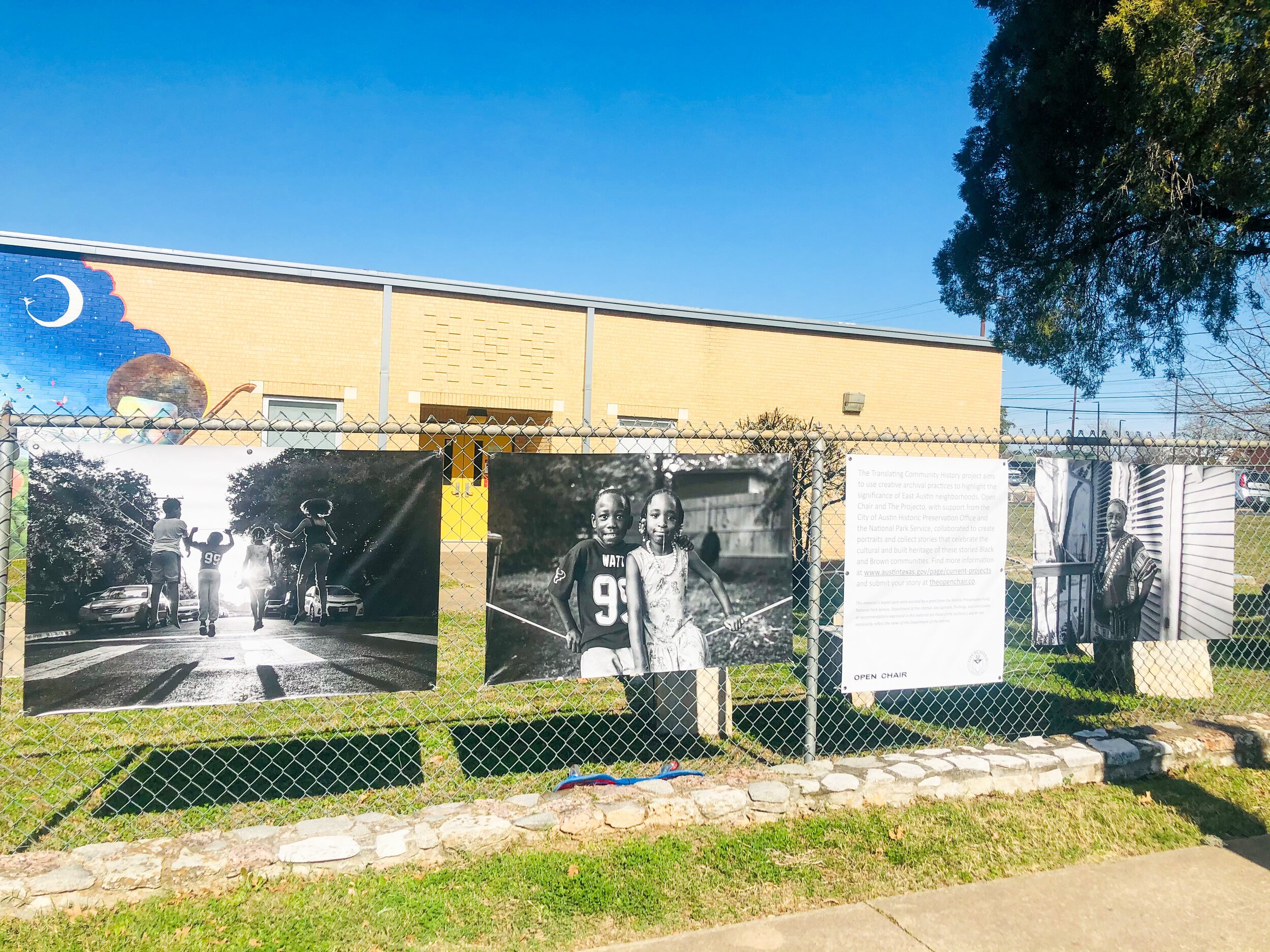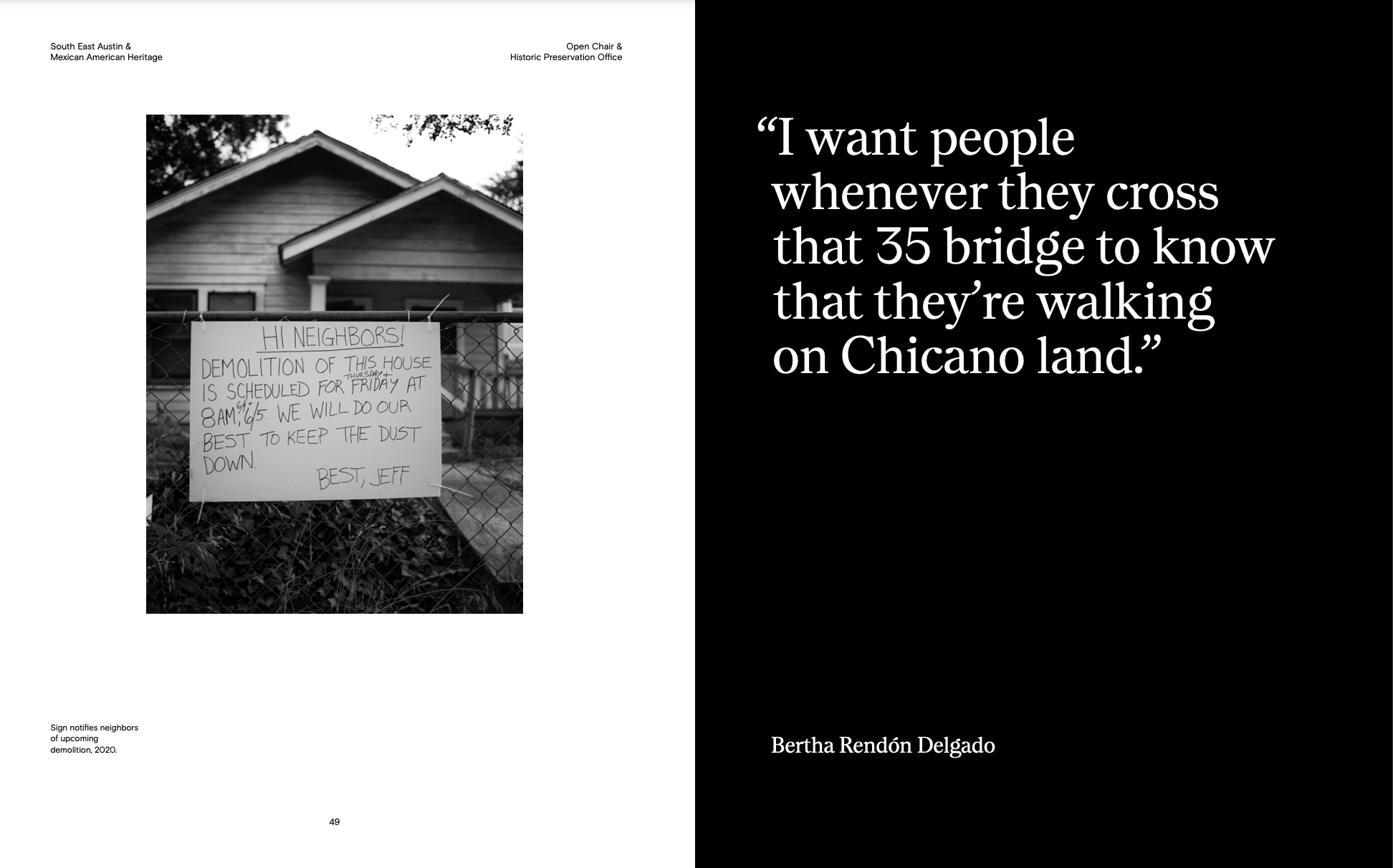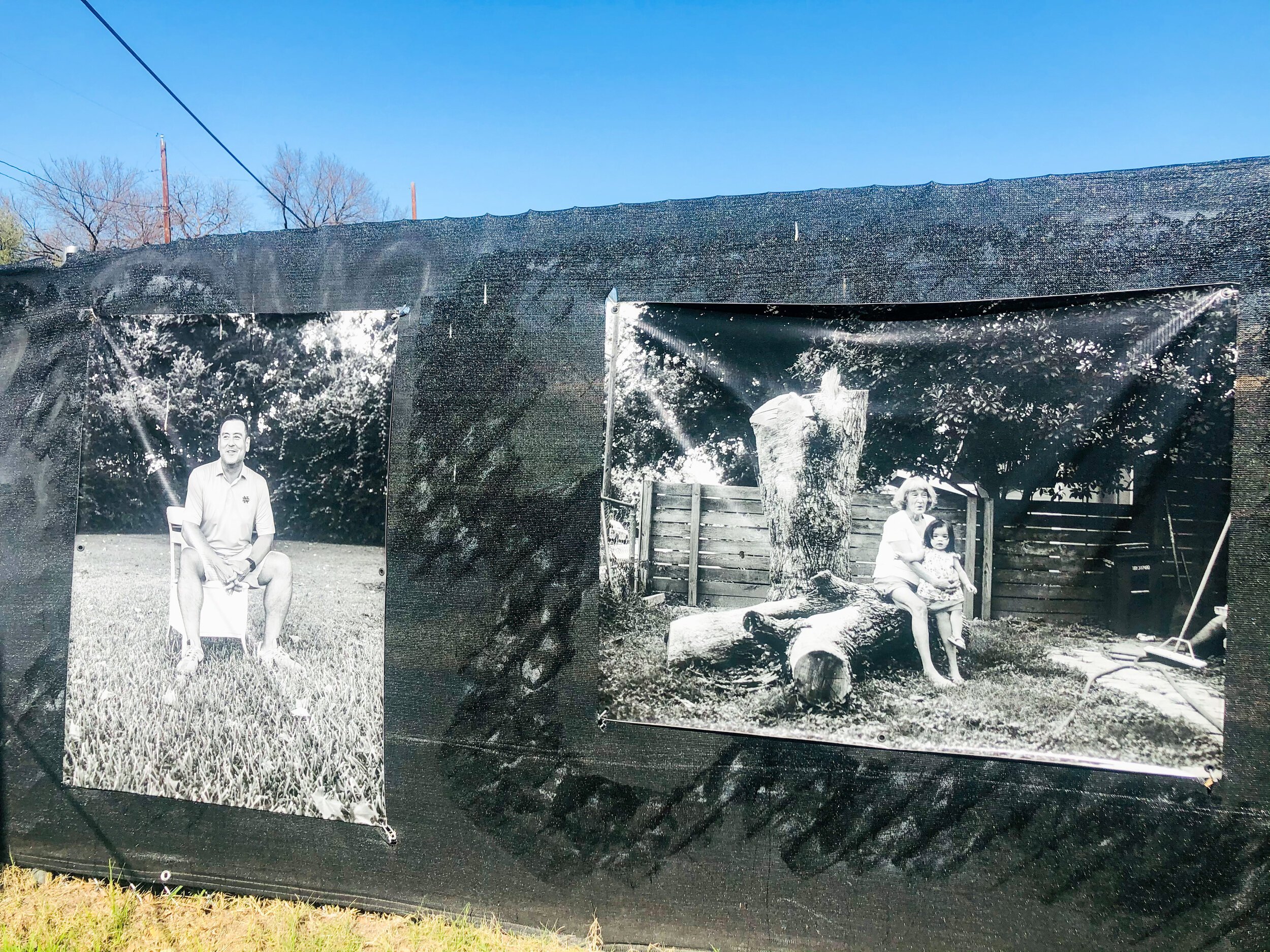Whose History? Celebrating Cultural Heritage by Translating Community History
BY CARA BERTRON
Translating Community History portraits installed at Blackshear Elementary School in Central East Austin
The City of Austin’s Historic Preservation Office and consultants The Projecto and Open Chair have wrapped up the final portion of the three-year long Translating Community History project, which focuses on engaging with community members about the buildings and stories that make places special.
Translating Community History is supported by the federal Underrepresented Communities Grant Program, which is intended to increase the number of properties associated with historically underrepresented communities that are listed in the National Register of Historic Places. The National Park Service administers the program, awarding roughly one dozen grants nationwide each year.
Austin’s Translating Community History project includes three components:
Neighborhood meetings and story sharing in two focus areas within the East Cesar Chavez and Blackshear Prospect Hill neighborhoods
Two National Register nominations recognizing Huston-Tillotson College and Parque Zaragoza as significant places with African American and Mexican American heritage
Multi-part heritage projects for each focus area
The project was sparked by the East Austin Historic Resources Survey, which identified twenty-seven potential historic districts in Central East Austin. However, when the grant application was assembled nearly a year after the survey’s completion, none of the communities identified as potential historic districts had reached out to the Historic Preservation Office to explore the benefits of designation. In the grant, Historic Preservation Office staff saw an opportunity to develop a neighborhood focused model for sharing—and listening— about how historic preservation tools could help meet community goals.
Translating Community History portraits on display at Metz Elementary in the Holly neighborhood of East Austin
From the beginning, it was clear that a project led by the City alone would not be able to achieve the project’s goals. Two community stakeholder groups were convened early to invite essential voices of local institutions, cultural organizations, and focus area residents to help shape the project. The stakeholder group selected the focus areas, advised City staff and consultants on outreach efforts, and outlined desired activities for the community heritage projects.
The heritage projects are an unusual component of an Underrepresented Communities Grant, since the grant program typically focuses more narrowly on National Register nominations, updates to existing nominations, and historic context statements. But City staff knew that National Register nominations could not be the only final products for a community-focused project. No matter how well-written, the nominations would each run 50 or more pages long, and would likely not catch the interest of most neighborhood residents. Limiting the grant outcomes to these relatively academic documents would miss an opportunity to broadly share about local heritage.
Page spread rom the South East Austin & Mexican American Heritage catalogue
The heritage project was conceived as a bridge that could creatively knit together the past and present through archival research, present-day resident portraits, and personal stories. The consultant team initially proposed to set up photobooths at community events like Juneteenth and Cinco de Mayo, print large-scale posters of the portraits on-site, and invite the portrait subjects to help install the posters on nearby building walls using wheatpaste. The temporary installations would help to tell important stories about historical ownership and deep cultural roots, while raising awareness of the project.
The COVID-19 pandemic required a nimble change of direction. Instead of community events, the consultant team set up socially distanced photoshoots in front of people’s homes and recorded video and audio from participants and the team installed the wheatpaste posters at four locations around East Austin in early December––a map of these temporary installations can be found here.
Translating Community History portraits on display at Sanchez Elementary Park in the East Cesar Chavez neighborhood of East Austin
The portraits have also been incorporated into three catalogs produced by the project: College Heights/African American Heritage, South East Austin/Mexican American Heritage, and Patrimonio Mexicano-Americano y del Sureste de Austin. Finally, short videos featuring community members and neighborhood footage were produced which provide an easy introduction to the project and focus areas.
Visit the Historic Preservation Office at www.austintexas.gov/ page/current-projects to see the National Register nominations, catalogs, and videos. Learn more about The Projecto and Open Chair at www.theprojecto.org and www.openchairatx.com.
THIS ARTICLE WAS WRITTEN FOR PRESERVATION AUSTIN’S FALL 2020 NEWSLETTER. READ OUR COMPLETE NEWSLETTER ARCHIVE HERE.




